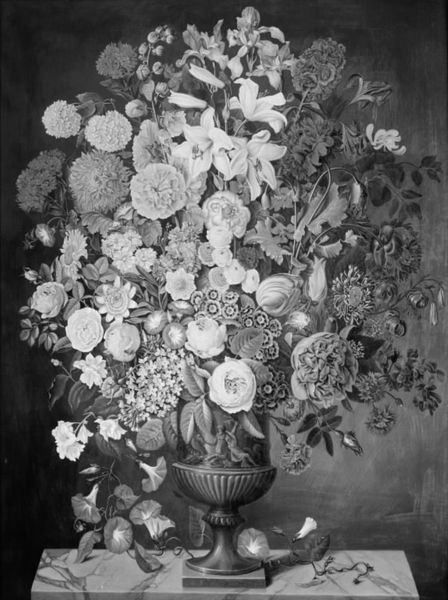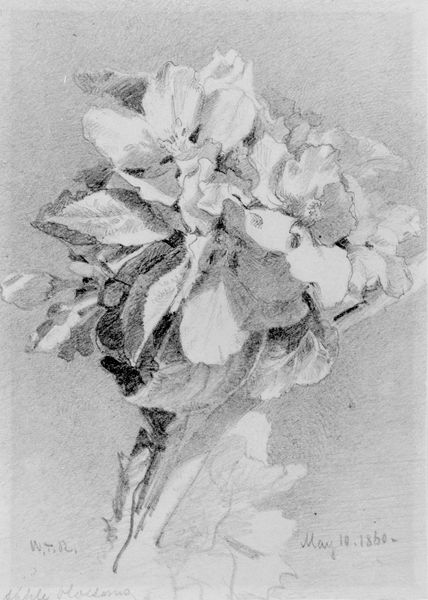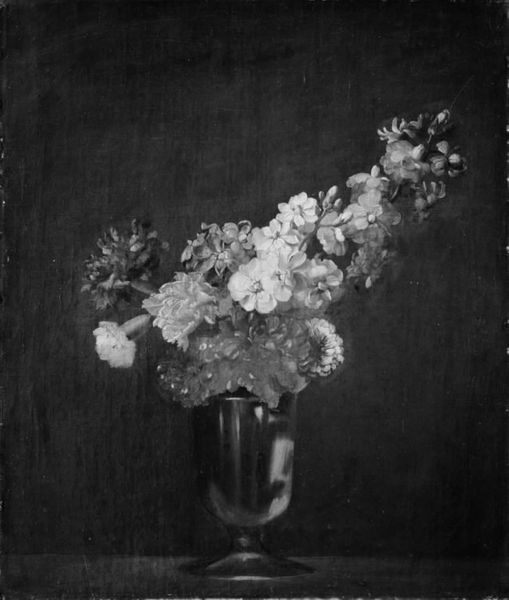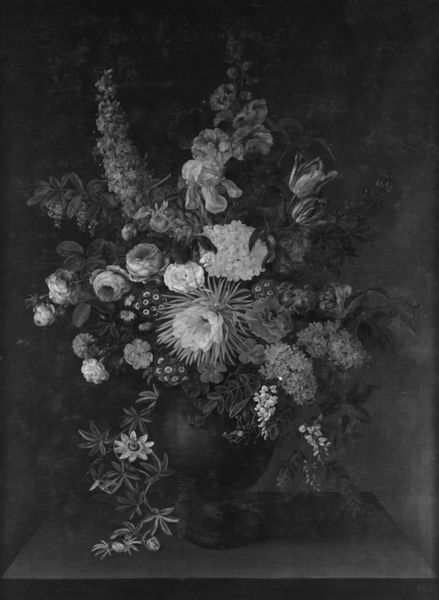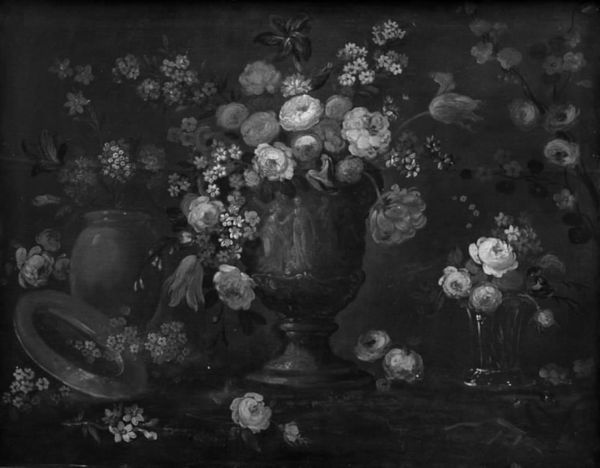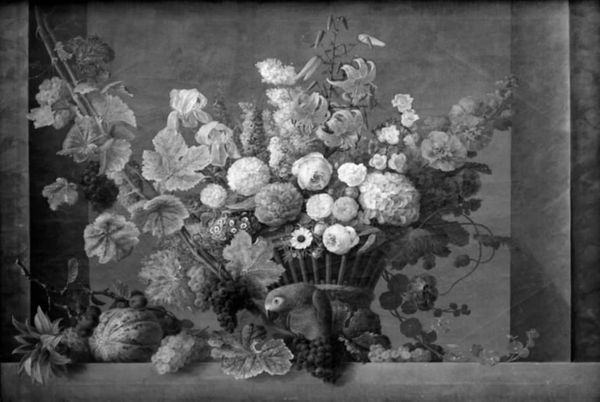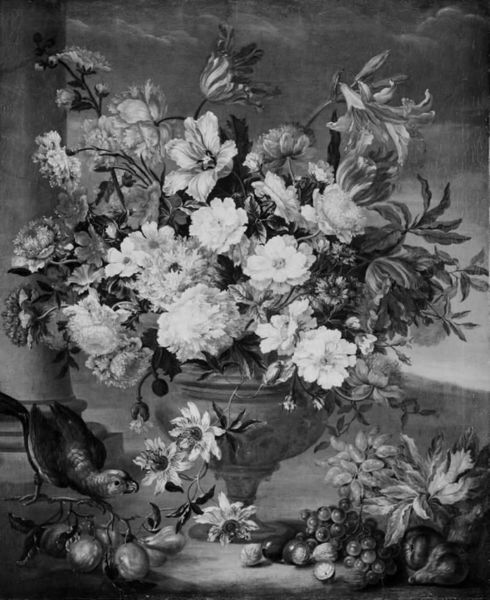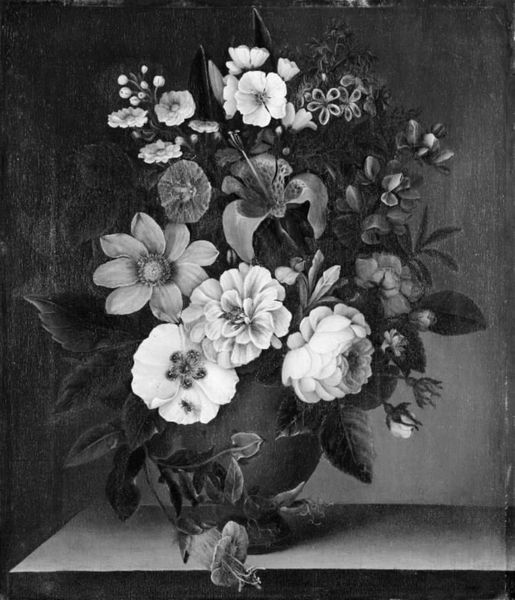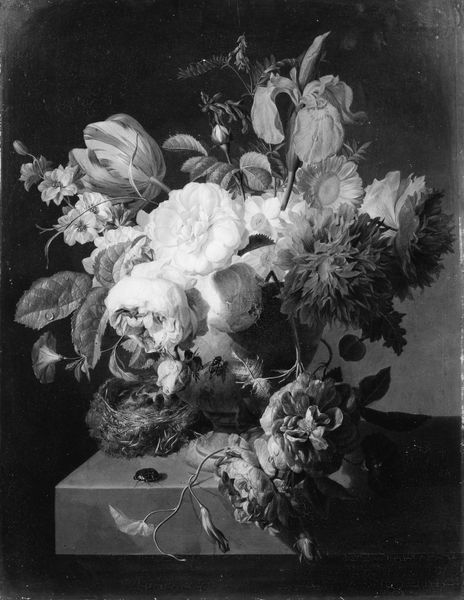
Dimensions: 23 3/4 x 32 1/4 in. (60.3 x 81.9 cm)
Copyright: Public Domain
Curator: Oh, wow. It’s like being enveloped in a cloud of…something delicate, but powerful. An energy. Editor: You’re feeling the emotive potential, definitely. What we’re looking at is “Spring Flowers,” an oil painting made between 1855 and 1860 by Gustave Courbet. It resides here at the Metropolitan Museum of Art. Curator: Courbet… of course! I mean, look at the texture—the impasto technique just gives everything a certain…viscosity, a fullness. It almost feels as if I could plunge my hand in! The blossoms are fighting for space, blooming with almost reckless abandon. Editor: And this captures Courbet's complicated relationship with traditional art. Although sometimes labeled as folk-art and rooted in Realism, his florid rendering of flowers also betrays lingering elements of Romanticism and Academic Art. Curator: You know, there’s something rebellious about a bouquet like this. It’s as if Courbet isn’t interested in painting pretty, idealized blooms, but is instead conveying their unruly vitality, their transient splendor. It could be said he challenges conventional standards with compositions which give space to the untamed. Editor: He’s giving visual voice to the often-overlooked realities of the natural world. Within a 19th century Parisian artistic context which catered to highly codified depictions of beauty, this painting stands as a quiet gesture toward social emancipation through representing what one actually sees in front of one's eyes, rather than what should be there based on aesthetic dictates. Curator: I see in it a reflection of human emotions – how love, or anger, can blossom and take over. I am deeply moved by that sense of nature exploding… I feel as if his art is almost prescient, predicting something we all experience on some level. It also touches on some larger philosophical concept, don't you think? Editor: Definitely. Courbet's choice of flowers moves the dialogue from aesthetic appreciation toward questions of representation. By spotlighting nature’s beauty outside conventional standards, he opens paths for discussions regarding representation of beauty and power in broader socio-political contexts. Curator: Absolutely. In a way, that explosive energy is a challenge to everything constrained and artificial. Editor: It's almost like a promise, perhaps. The resilience of the blooms signals not only life, but potential for continued growth and change. Curator: I think you nailed it, with "potential for continued growth." After spending just a few moments immersed within this world, my mind wanders into places where boundaries start to crumble!
Comments
No comments
Be the first to comment and join the conversation on the ultimate creative platform.


